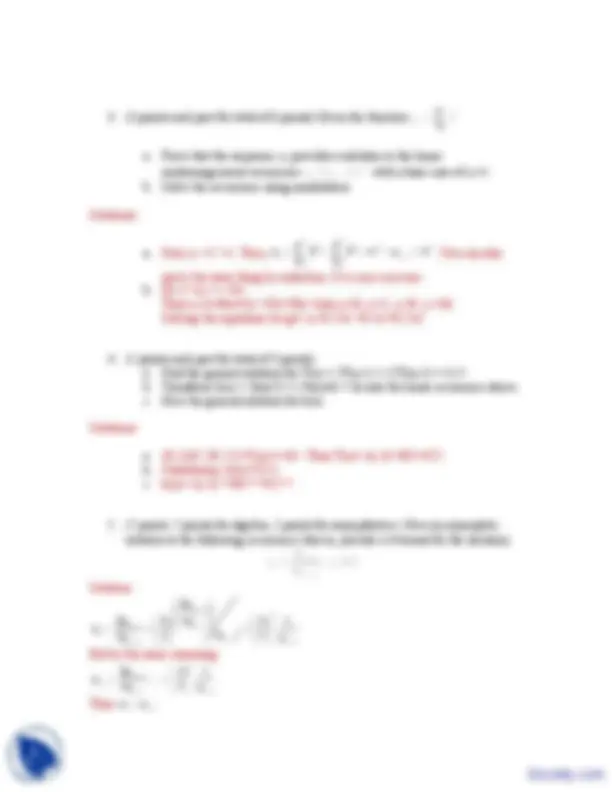




Study with the several resources on Docsity

Earn points by helping other students or get them with a premium plan


Prepare for your exams
Study with the several resources on Docsity

Earn points to download
Earn points by helping other students or get them with a premium plan
Community
Ask the community for help and clear up your study doubts
Discover the best universities in your country according to Docsity users
Free resources
Download our free guides on studying techniques, anxiety management strategies, and thesis advice from Docsity tutors
During the study of discrete mathematics, I found this course very informative and applicable.The main points in these lecture slides are:Recurrence Relation, Tower of Hanoi Puzzle, Different Arrangements, Recursive Formula, Deterministic Algorithm, Nonhomogeneous Recurrence, Recurrence Using Annihilators, Linear Recurrence, Asymptotic Solution
Typology: Slides
1 / 4

This page cannot be seen from the preview
Don't miss anything!



a. a (^) n = 2 a (^) n − 1 + 2 n^2 , a (^) 1 = 4. b. a (^) n = − a (^) n − 1 + 2 a (^) n − 2 + 2 n^ −^1 , a (^) 0 = a (^) 1 = 1. c. a^ n^ =^9 a^ n 2
Therefore in the limit an is constant, Θ(1).